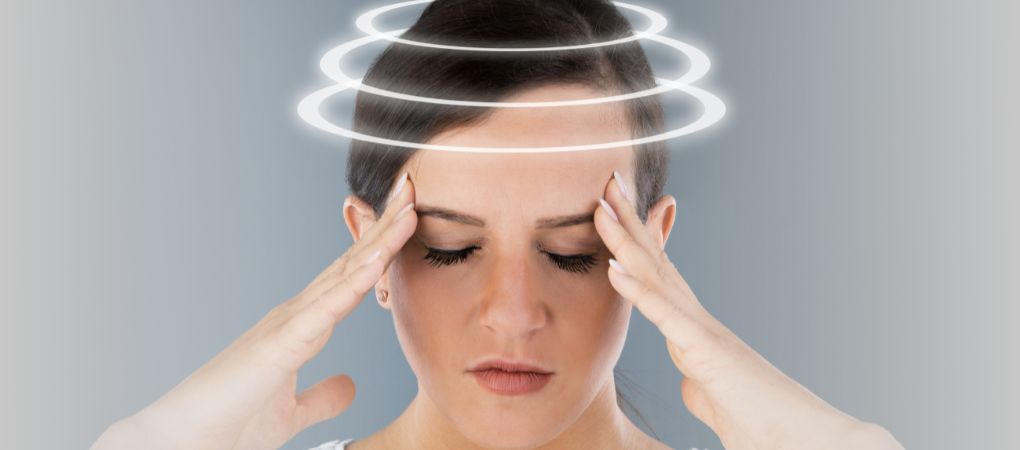Francesca Galiano
|
27/09/2022 - Last update 25/05/2023
Marcel Fraix, Sondos Badran, Victoria Graham, Donna Redman-Bentley, Eric L. Hurwitz, Valerie L. Quan, Michelle Yim, Mary Hudson-McKinney, Michael A. Seffinger | Year 2021
Osteopathic manipulative treatment in individuals with vertigo and somatic dysfunction
Pathology:
Vertigo
Type of study:
Pilot randomized controlled trial
Date of publication of the study’:
2021/Jan/01

Purpose of the study
- Objective: to assess the effects of OMT, compared to or in combination with vestibular rehabilitation therapy, in people with vertigo and somatic dysfunction
- Measured outcomes:
• primary: assessment of balance through Sensory Organization Test (SOT) and vertigo through Dizziness Handicap Inventory (DHI)
• secondary: assessment of eyesight through optometry, assessment of somatic dysfunction, structural osteopathic assessment (SOAP) and adverse effects
Participants
- Numbers: 26 people (19 female and 7 male, mean age 52.2 years)
- Criteria of inclusion:volunteers, age between 18 and 79 years, with a diagnosis of peripheral vertigo other than Meniere’s disease for at least 3 months, somatic dysfunction, to be able to participate in a computerized dynamic posturography testing, to tolerate manual therapies and exercises, to stay seated for 30 minute, to stand for 30 minutes and to switch from seated to standing and also to deambulate independently, to be able to communicate in English and Spanish.
- Criteria of exclusion:a history of acute traumatic incidents, coagulation disorders (e.g. risk of bleeding), anticoagulant therapy, Meniere’s disease, hydrops endolymphatic, neurological conditions (including peripheral neuropathy, stroke, concussion, cerebral aneurysm, multiple sclerosis), spinal cord trauma, spine surgery, rheumatoid arthritis, “legal” blindness to one or two eyes, Ehlers-Danlos syndrome, Down syndrome; current treatment with vestibular rehabilitation therapy, visual therapy, manual treatments or manual treatments within the previous 3 months.
- Groups of study: four groups obtained by randomization
- Group 1: OMT, 7 people
- of which 1 person did not complete the follow-up
- Group 2: vestibular rehabilitation therapy, 5 people
- of which 1 person did not complete the follow-up
- Group 3: vestibular rehabilitation therapy combined with OMT, 6 people
- Group 4: no intervention, 5 people
- of which 2 people did not complete the follow-up
- Group 1: OMT, 7 people
Interventions and evaluations
- Evaluation of the person’s history and of their physical status to define the possible exercises to follow in the vestibular rehabilitation therapy
- Assessment using SOT, DHI, computerized dynamic posturography testing, optometry and structural osteopathic assessment (SOAP) at baseline, after the third intervention and after 3 months (follow-up)
- with regard to the eyesight, visual acuity, ocular alignment, fixation ability, pursuit and saccadic skills, depth perception, vergence skills, visual field status, and contrast sensitivity were assessed
- 3 weekly sessions of 45 minutes per participant
- OMT: counterstrain, myofascial release, ligamentous tension balancing, soft tissue techniques, high-velocity low-amplitude techniques, articulatory techniques
Vestibular rehabilitation therapy: specific exercises depending on the diagnosis of peripheral vestibular hypofunction, hypersensitivity to peripheral movement and benign paroxysmal positional vertigo - The assessments were carried out by an osteopathic physician, a physiotherapy doctor and an optometrist
- the osteopath who carried out the somatic dysfunction assessment did not perform the OMT
Results
Primary outcomes: compared to the control group, all intervention groups showed an improvement in vertigo measured using DHI, both at the end of treatments and after 3 months. The only improvement, however, that has reached statistical significance occurred in the group with vestibular rehabilitation therapy combined with OMT, in comparing the state of vertigo at the follow-up after 3 months with that at the beginning of the study. The same results emerged from the balance assessment obtained using SOT. In the three intervention groups (especially in the case of vestibular rehabilitation therapy with or without OMT), compared to the beginning of the study, at the follow-up after 3 months there were clinically significant changes in both vertigo and balance.
Secondary outcomes: with regard to the somatic dysfunctions, their severity decreased in all groups, however, only in the group with OMT alone the decrease was statistically significant. Optometric analysis showed general improvements in visual acuity, but only one result achieved statistical significance (visual acuity after three vestibular rehabilitation treatments with OMT). No adverse effects emerged, other than a fall during a computerized dynamic posturography session.
Discussion
The group that performed the combined intervention of vestibular rehabilitation therapy with OMT showed the best results, that is, significant results from a clinical point of view, although they were fully manifested only after 3 months at the follow-up. These results were both a reduction in dizziness and a better balance. The optometric analysis showed some visual alterations (eg, vergence disorders) that can usually affect balance and postural stability. It would therefore be useful to carry out further studies by evaluating these aspects more appropriately, although these studies would require a much larger sample.
Of course given the small number of participants, the results are to be considered with caution
The review of Osteopedia
By Marco Chiera
Strengths: evaluation of results at 3 months after the end of treatments; the sample size (how many people to recruit) was calculated, although not achieved; good description of the tests and interventions administered; evaluation of clinically significant results
Limits: too small a sample to draw conclusions; there are some misprints in the part of the results and, perhaps, in the tables; in reality, it seems that the effect is mainly due to vestibular rehabilitation therapy, to which OMT seems to add a slight positive contribution

Are you an osteopath?
Register and enjoy the membership benefits. Create your public profile and publish your studies. It's free!
Register now
School or training institution?
Register and enjoy the membership benefits. Create your public profile and publish your studies. It's free!
Register now
Do you want to become an osteopath? Are you a student?
Register and enjoy the membership benefits. Create your public profile and publish your studies. It's free!
Register now







